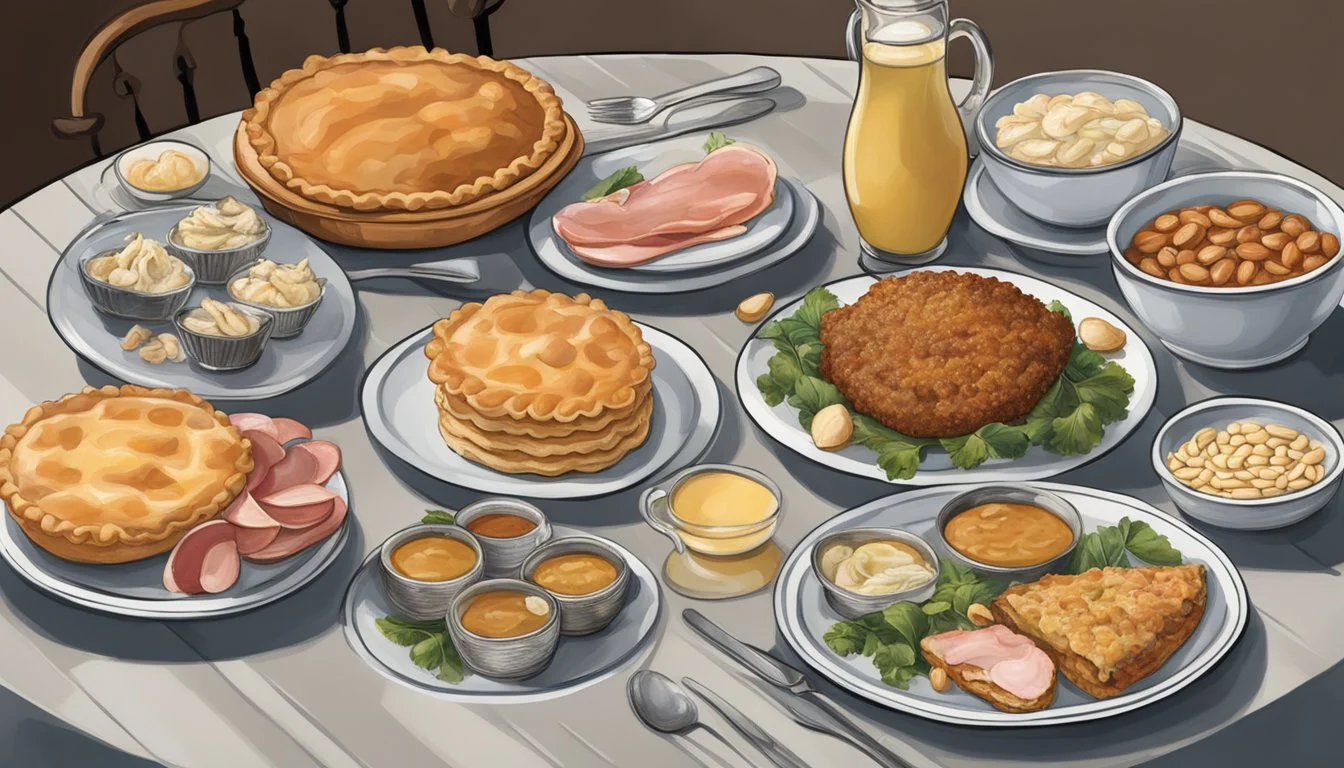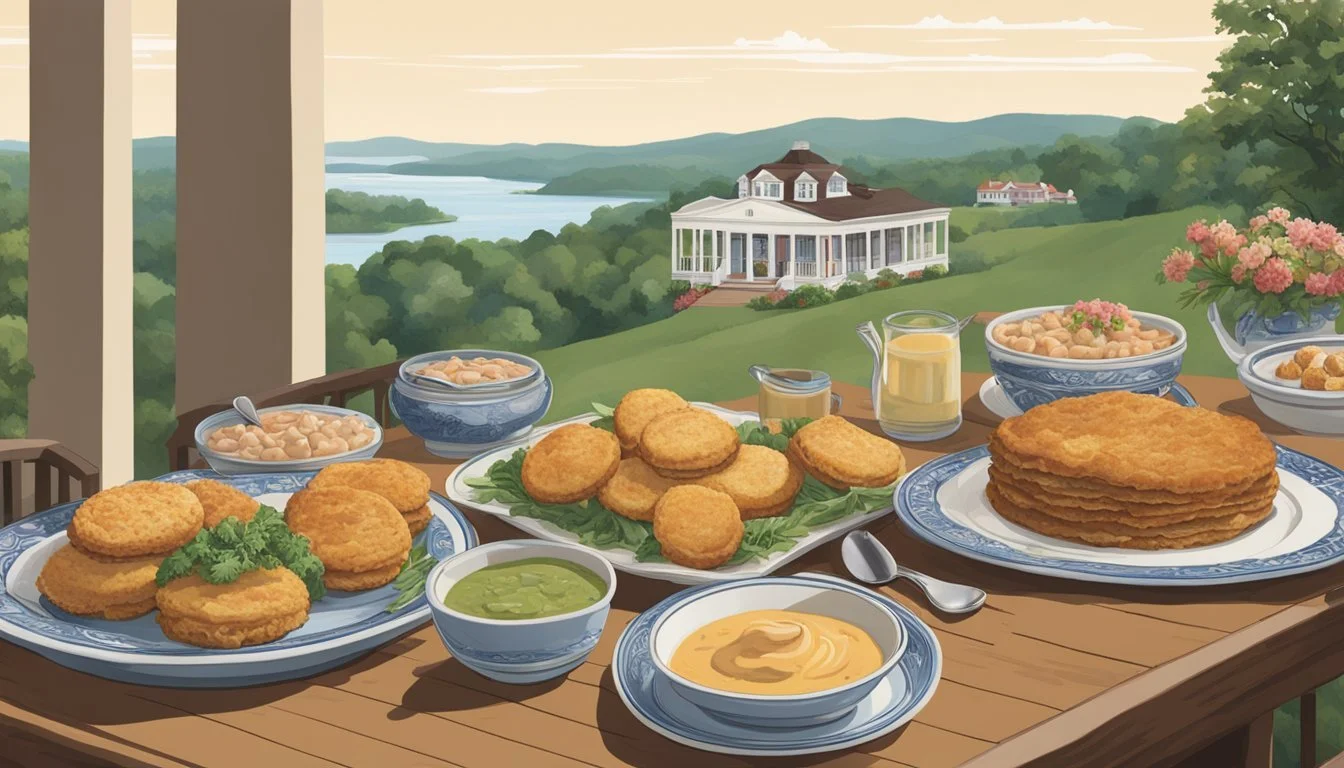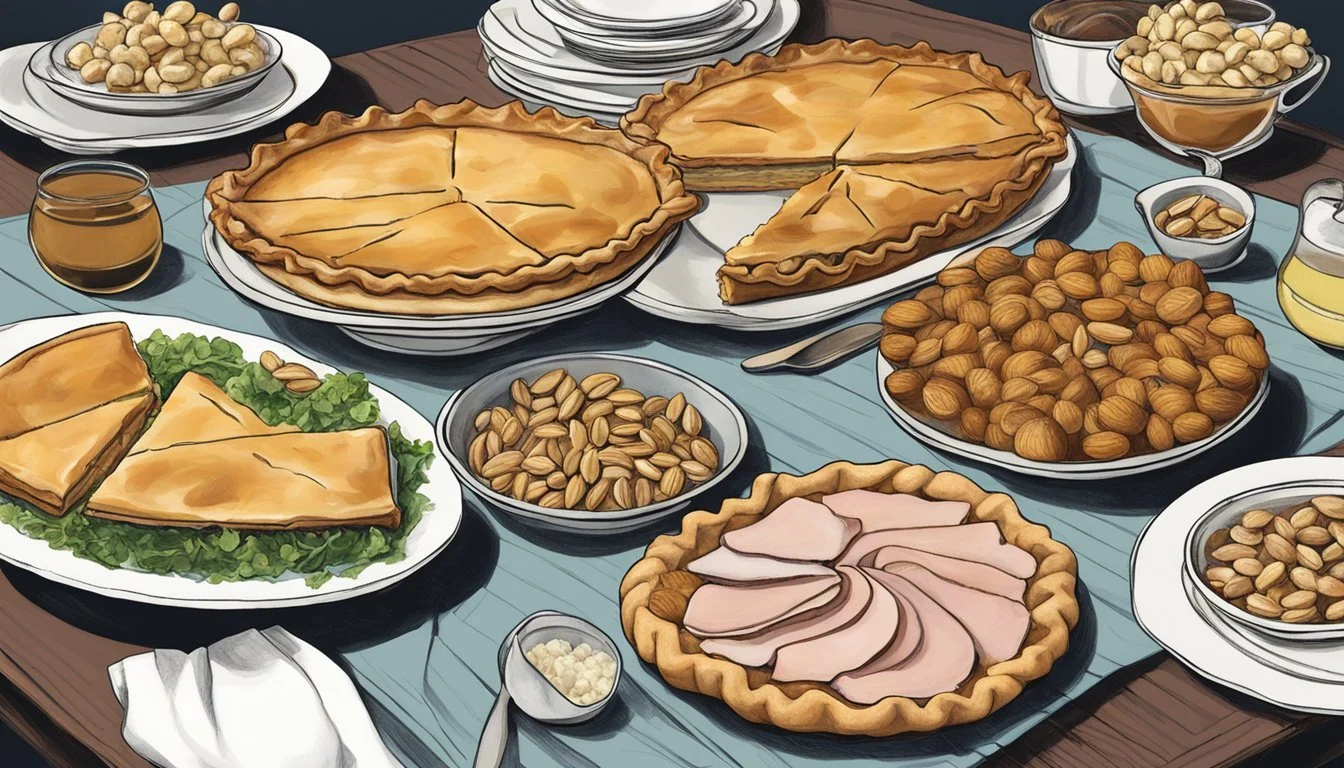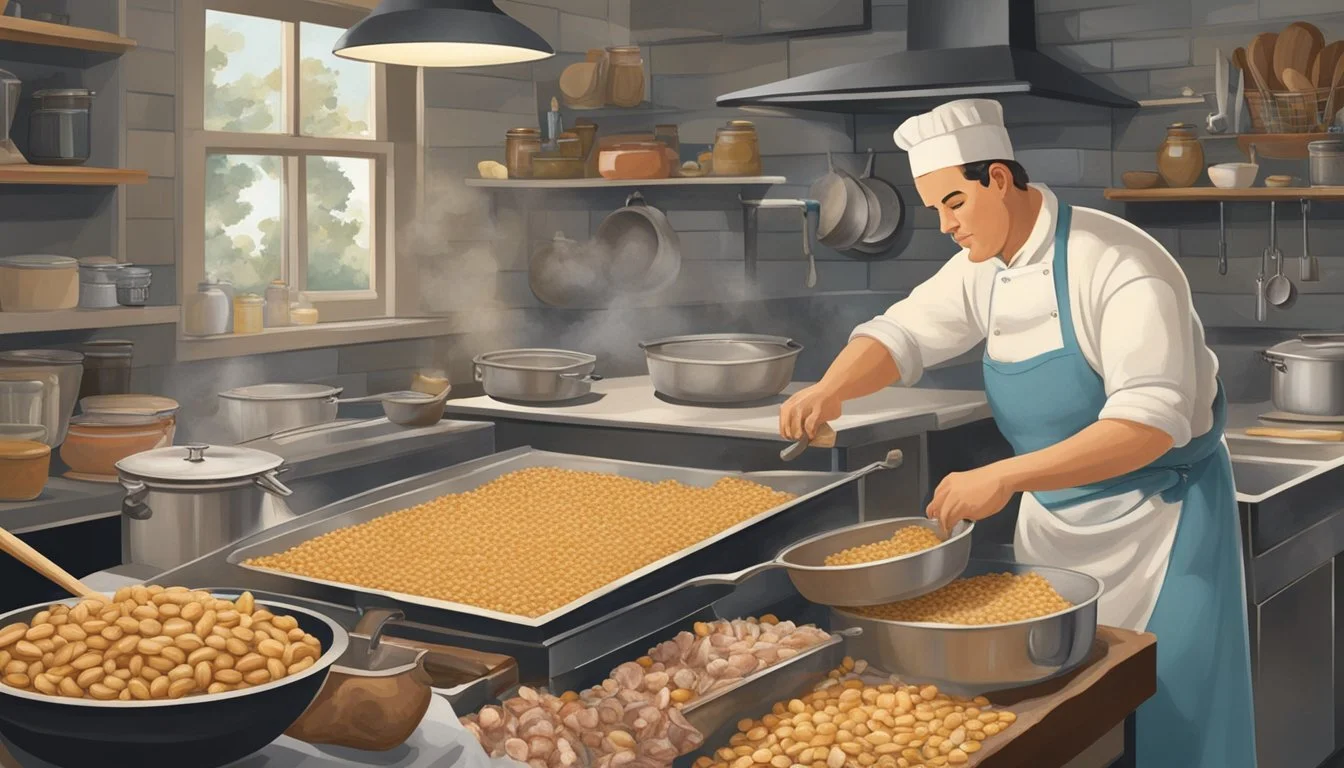What Food is Virginia Known for?
Exploring Iconic State Dishes
Virginia boasts a culinary landscape rich in tradition and flavor. It is known for a variety of distinctive foods that have been shaped by the state's history, geography, and cultural influences. From sweet to savory, the Old Dominion offers an array of iconic dishes that reflect its Southern roots and coastal location.
One can't discuss Virginian cuisine without mentioning the state's famous hams, particularly the country ham, which has been a staple since the 17th century. Seafood also plays a pivotal role in the region's food scene, with blue crabs (how long does crab last?) and oysters (What wine goes well with oysters?) from the Chesapeake Bay being local favorites. The fertile land contributes to Virginia's reputation for delicious produce, including apples which are transformed into pies and apple butter, a spread beloved by residents.
The state's love for hearty dishes is embodied in the traditional Brunswick stew, a thick and rich combination of vegetables, meats, and sometimes even a spoonful of love, if local lore is to be believed. These foods are not just meals; they are a reflection of Virginia’s history, culture, and community spirit.
Historical Roots of Virginia's Cuisine
Virginia's culinary history reflects its heritage, a tapestry woven from Native American and European settler influences, local agricultural resources, signature specialties, and community celebrations of food.
Influence of Native American and European Settlers
When English settlers arrived at Jamestown in 1607, they encountered a variety of foods enjoyed by the Native Americans, principally the Powhatan Indians. The settlers learned to use local ingredients and adopted Native American techniques in their cooking. Staples such as corn, which arrived in Virginia around 200 CE, became vital to both native and colonial diets. Europeans introduced their own culinary traditions, which intertwined with the existing native practices, leading to the development of a unique Virginian cuisine.
Development of Local Specialties
The blending of cultural food traditions gave rise to several local specialties. Virginia ham, for instance, became a standout product, with the Smithfield ham gaining particular fame due to its unique curing process. The country ham and its inclusion in iconic dishes like ham biscuits further solidified Virginia's reputation for savory meats.
Agriculture and Its Impact on Cuisine
Virginia's nickname, "The Old Dominion," speaks to its history which is deeply entrenched in agriculture. The fertile land produces a bounty of local produce that is fundamental to its cuisine. Corn, tomatoes, berries, and various greens are central to the Virginian diet. The seasonal nature of these crops plays a significant role in both everyday meals and the celebrations that mark the harvest.
Food-Related Events and Festivals
Virginia hosts numerous events and festivals that showcase its rich culinary heritage. Historic events like the "Foods & Feasts of Colonial Virginia" offer a glimpse into the cooking methods of the first settlers, while modern-day oyster festivals highlight the continuing tradition of oyster harvesting in the state. These gatherings are not only gastronomic delights but also tell the story of Virginia's food through interactive experiences, celebrating the state's identity as a haven for food lovers.
Signature Foods of Virginia
Virginia's culinary landscape shines with its waterfront seafood offerings, signature country hams, diverse barbecue flavors, and rich array of fruits and vegetables nourished in its verdant orchards and farms.
Seafood Traditions
Virginia's coastline and waterways, especially the Chesapeake Bay and the Eastern Shore, are the heart of its seafood traditions. Chesapeake Bay oysters (What wine goes well with oysters?) play a starring role, with the Virginia oyster recognized for its size, quality, and taste. Blue crabs are another staple, cherished for their succulent crab meat which is often featured in local dishes.
Virginia's Famed Country Ham
The pride of Virginia's charcuterie is the country ham, with distinguished flavors developed from unique curing processes. Smithfield hams, a type of Virginia ham, are acclaimed for their salty and distinct taste.
Barbecue and Southern Cuisine
Virginia's barbecue scene offers a variety of regional styles, incorporating tomato-mustard (how long does mustard last?) blends and even Worcestershire-based flavors. These techniques complement a broader array of southern cuisine, which includes classics like fried chicken and the hearty, savory Brunswick stew.
Local Produce and Orchards
The Commonwealth is prosperous with orchards growing apples, peaches, and more. Seasonal produce like tomatoes, pumpkins, and strawberries highlight the state's agricultural variety. Peanut soup nods to the peanut's historical and cultural importance as a part of Virginia’s array of local favorites.
Virginia's Culinary Delicacies
Virginia's diverse geography from the Appalachian Mountains to the coastal plains gifts it with a unique array of foods that are rich in history and flavor. The state offers a variety of sweet treats, nuts (how long do nuts last?), and beverages, with deep-rooted traditions reflected in every bite.
Sweet Treats and Baked Goods
Apple Pie: A classic dessert made with crisp Virginia apples. They are often seasoned with cinnamon and sugar creating a sweet and savory delicacy.
Apple Butter: This smooth, concentrated form of apple sauce is a beloved spread. Virginians traditionally pair it with warm, freshly baked bread or as a topping on vanilla ice cream.
Peanuts and Peanut-Based Dishes
Virginia Peanuts: Known for their large size and distinctive crunch, these peanuts are often roasted with a touch of salt.
Peanut Soup: A velvety soup made using ground peanuts, it combines a unique blend of savory flavors, often enjoyed with a swirl of cream.
Virginia Wine and Beverages
Wine: The state's wineries produce wines with a broad range of flavors, highly influenced by the local terroir.
Beverages: Beyond wine, Virginians savor a variety of beverages from ciders made from Virginia apples to craft beers incorporating local barley and hops.
Cultural and Geographic Influences
Virginia's cuisine reflects its rich cultural tapestry and distinct regional landscapes. Each area within the state influences the local flavors and food traditions, giving rise to diverse regional specialties.
Chesapeake Bay and Tidewater Area
The Chesapeake Bay and Tidewater region have a profound impact on Virginia cuisine. Known for its abundant seafood, this area heavily features dishes seasoned with Old Bay, a trademark spice blend that complements the fresh taste of local blue crabs. The Tidewater area also produces oysters and clams (What wine goes well with clams?), intrinsic to Virginia's coastal fare.
Shenandoah Valley's Contributions
Shenandoah Valley is recognized for its wild game and pork products. This fertile region provides a bounty of ingredients that contribute to the meals, including flavorful hams renowned throughout Virginia and beyond. The valley also adds a pastoral charm to the state's cuisine with its homegrown fruits and vegetables.
Eastern Shore's Seafood Bounty
On the Eastern Shore of Virginia, the proximity to water plays a crucial role in defining its food selection. Seafood, especially blue crabs, flounder, and oysters, forms the cornerstone of the Eastern Shore's culinary identity. The region's seafood bounty is celebrated in festivals and daily meals alike.
Appalachian Traditions
The rugged Appalachian region has a distinct food heritage characterized by cornbread, country ham, and trout. The hearty flavors and simple preparations speak to the land's history and the practicality of mountain living, where preserved meats and wholesome grain sides are staples.
Modern Virginia Cuisine
Virginia's culinary scene skillfully blends time-honored tastes with contemporary flair, featuring a variety of trendy, locally-sourced menus.
Trendy Menus and Fusion Dishes
Northern Virginia's food landscape is seeing a resurgence of fusion dishes that integrate the state's traditional ingredients with modern gastronomic trends. Chefs are crafting plump Rappahannock oysters with Asian-inspired dressings and marrying the Southern classic, country ham, with Italian and French culinary techniques. Menus often showcase this blend, highlighting the region's rich flavors through a modern lens.
Food Scene in Northern Virginia
The food scene in Northern Virginia distinguishes itself with an array of dining establishments that capture the essence of modern Virginia cuisine. From upscale eateries serving duck with scalloped potatoes to hipster cafes with craft beer pairings, the locality is an incubator for innovative food trends. The emphasis on local dining experiences often extends to ingredients sourced straight from the nearby Chesapeake Bay or the region's sprawling farms.
Impact of Food Movements on Local Dining
Local dining in Virginia has been significantly influenced by health and sustainability movements. More menus now boast organic, farm-to-table offerings that highlight Virginia's bounty, like grass-fed beef or heirloom apples transformed into homemade apple butter. These shifts reflect a confident commitment to both the state’s heritage and the health of its patrons, exemplifying how modern dining practices can enhance traditional flavors.
Cooking Methods and Seasonings
Virginia's culinary landscape is distinguished by its use of historical cooking methods and a blend of seasonings that give local dishes their unique character. These methods showcase the state’s commitment to tradition, while the use of specific spices and herbs emphasize the regions rich culinary heritage.
Traditional Cooking Techniques
In Virginia, traditional cooking techniques are deeply rooted in history. Roasting and grilling are prevalent, especially for meats like country ham and barbecue. Fried foods (What wine goes well with fried foods?) are also cornerstone of Virginia cuisine, with classics like fried chicken being a staple in many Southern meals. These methods not only impart a distinct flavor but also a nod to the state's cultural past.
Use of Spices and Herbs
Virginia's recipes often incorporate a variety of spices and herbs, enhancing the natural flavors of the food. The state is particularly known for its application of Old Bay seasoning, (how long does old bay seasoning last?) a mix that includes celery salt (how long does celery salt last?), black pepper, crushed red pepper (how long does crushed red pepper last?) flakes, and paprika among others. Additionally, cooks frequently use fresh herbs like thyme and parsley to enliven dishes and bring a touch of aromatic freshness.
Unique Flavor Combinations
Dishes in Virginia reflect a bold approach to flavors, integrating sweet, salty, and savory notes. Pimento cheese, a blend of sharp cheddar, pimento peppers, and mayonnaise, offers a creamy texture and a tangy taste that is truly distinctive. Such unique combinations contribute to the rich tapestry of Virginia's culinary offerings.
Virginia's Famous Sauces and Dressings
Sauces and dressings are integral in Virginia, often used to complement or enhance the main ingredients. From tangy BBQ sauces found at local BBQ joints to the creamy, mildly spiced mayonnaise-based dressings, these condiments can transform a simple dish into something memorable. The versatility of these sauces and dressings showcases Virginia’s culinary ingenuity.
Dining and Food Experiences
Virginia's revered food scene ranges from gourmet fine dining to local diner classics, with a strong focus on farm-to-table ethos and vibrant culinary experiences including tours and tastings that cater to every palate.
Fine Dining and Casual Eats
Virginia offers an amalgam of food experiences that cater to a variety of tastes and occasions. For those seeking a more upscale dining experience, Virginia's fine dining establishments often feature seafood delicacies, such as blue crabs from Chesapeake Bay, and gourmet interpretations of southern fare. In contrast, casual eateries provide a relaxed atmosphere where classic Virginia diner specialties, like country ham and BBQ, take center stage.
Farm-to-Table and Organic Options
Farm-to-table restaurants thrive in Virginia, celebrating the state's rich agricultural heritage. These establishments prioritize local produce, offering dishes that highlight ingredients such as Shenandoah Valley apples and locally sourced oysters. Organic options are increasingly available, reflecting Virginia's support for sustainable farming practices.
Culinary Tours and Tasting Events
Virginia's culinary landscape can be explored through various tours and tasting events that showcase the state's food and drink diversity. Culinary tours introduce food enthusiasts to Virginia's iconic eateries and hidden gems, while tasting events allow attendees to sample the state's finest wines and craft beers, complemented by local cuisine.
Virginia Diner and Iconic Eateries
No food journey in Virginia is complete without a visit to the Virginia Diner, known for its classic American fare with a Southern touch. This landmark offers a quintessential dining experience that is both nostalgic and delightfully delicious. Iconic eateries across the state add to the charm, serving up renowned Virginia foods like Smithfield ham, deviled eggs, and peanut-inspired dishes.
Conclusion
Virginia's culinary landscape proudly reflects its rich history and agricultural abundance, offering a mosaic of flavors that have become synonymous with the state.
Southern Comfort: The traditional southern-style fare deeply rooted in Virginian soil includes staples like country ham and Brunswick stew, each carrying centuries of preparation traditions into the present.
Seafood Specialties: Coastal delights are central to Virginia's identity, with oysters and blue crabs featuring prominently. These seafood offerings are enjoyed in a myriad of preparations, from steaming to barbecuing, encapsulating the state's connection to the Chesapeake Bay and the Atlantic.
Agricultural Harvest: Virginia's orchards and fields contribute to its fame with apples often transformed into beloved apple pies, while peanuts emerge in varied culinary forms across the state. The sweetness of homemade peach cobbler offers a quintessential taste of Virginia's local produce.
Virginia's Staples Description Country Ham & Brunswick Stew Reflections of Southern tradition and history Oysters & Blue Crabs Coastal favorites, versatile in preparation Apples & Peaches Fruits of the local orchards, basis for desserts
In essence, Virginia's food is a tapestry woven from history, community, and the land itself. These foods are not just staples but symbols of Virginian identity, shared across dinner tables and celebrated during holidays, ingrained in both tradition and taste.








